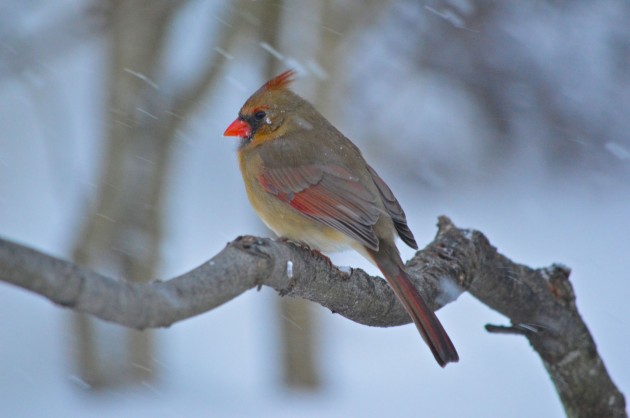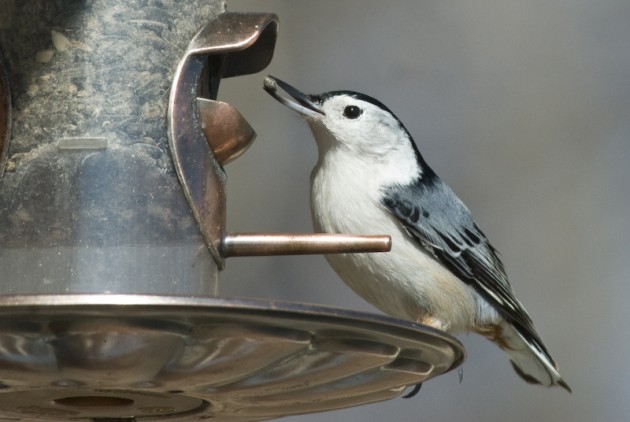By John Barrat
What crunchy food did Americans spend $5.5 billion on last year—with sales that spiked before snow and ice storms?
If you guessed birdseed then you may live in one of the 40.5 million households that participate in wild bird feeding in the U.S. each year. After gardening, backyard bird watching is the second most popular outdoor activity in America.
“The education, pleasure and other benefits that are derived when people enjoy and watch birds up close in their yards is tremendous,” says Peter Marra, director of the Smithsonian’s Migratory Bird Center. “It’s also an excellent way to launch an interest in watching birds in more natural settings in the wild.”
So, if you, like Marra, hang up a backyard bird feeder at the first hint of winter, here are a few tips from Marra to make the experience a positive one for both you and your backyard birds:
- Keep your feeder clean and clean it regularly. Don’t let old food accumulate.
- To avoid birds flying into your windows make sure you don’t place a feeder too close to your house.
- Hang feeders high and away from bushes and places where cats and other predators can hide and ambush your birds. Keep cats inside.
- Use a variety of feeders. “A mix of different types of feeders is ideal,” Marra says, “everything from a thistle feeder so you are attracting things like gold finches to something with sunflower seeds and millet to suet for woodpeckers and other species.”
- Add a water element. “I also have running water in a pond I built in my yard with a neighbor,” Marra adds. “For the most part in a lot of places there is not much natural water so having a bird bath that is constantly moving or, if you can build a pond like I did, that really is a good way to attract birds and provide water. I have been amazed at the number of species attracted to my pond, species that I wouldn’t have seen otherwise… pine warblers, redstarts and magnolia warblers have all come down right to the pond.”
Winter can be a difficult time for birds as food is harder to find and they need more energy to stay warm. When the sun goes down on a winter night and the temperature drops low, “some of these birds will do communal roosting, so you will have piles of chickadees or nuthatches that collect in nest boxes and tree cavities to stay warm,” Marra says. “Other birds will nestle up against the crotch of a tree to stay warm.”
“Birds also have several different mechanisms they use to stay warm, a lot of which involves their feathers,” Marra continues. “They also have what is called counter current circulation in their legs, where cold blood is constantly being warmed by warm blood coming right from the heart.
“Keep in mind that there are birds that live in places where you get -15 degree F. temperatures, so it’s quite amazing that these birds sometimes don’t just freeze into blocks.”







